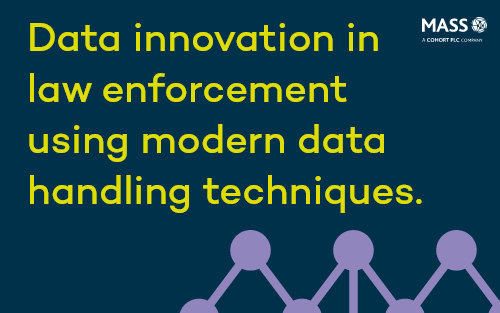
'Drowning in data but starved of information’. Does this sound familiar?
In our experience most organisations find themselves in this situation, particularly industries where data is crucial to decision making like law enforcement. They generate and use large amounts of data from multiple sources on a daily basis but may not always be able to store it effectively or fully exploit it in a way that enables decision makers to act quickly. Typically, this situation arises when solutions to individual data problems have been implemented in a piecemeal fashion - often over many years - leading to compartmentalised data.
Modern data handling tools and techniques can be employed to improve this situation; in the short -term, data visualisation and reporting that draws on existing sources of data will provide much improved situation awareness for all decision makers, ranging from front-line detectives to command level. In the medium term, re-hosting an existing system of systems on a modern, flexible and accessible platform can often yield operational savings and increased productivity that - together - are greater than the cost to change.
A crucial part of any modernisation programme is the automation of labour-intensive processes. Using modern querying techniques to automatically harvest, cleanse, manipulate and prepare data for exploitation and reporting can save many labour-hours; releasing staff to concentrate on other value-adding tasks.
Modern visualisation techniques really do prove the – updated – adage that ‘A Picture is Worth a Million Numbers’. Trying to identify trends, peaks and other events from a data table is difficult and time consuming but visualisations allow users to drill into the data to answer many questions including those that have never been previously asked.
Often, significant change can be achieved without huge investment in new technologies and platforms just by leveraging existing tools and resources - making the absolute best of what is available. This is achieved by the utilisation of both business analysts - who understand the business needs and required outcomes - and data analysts - who can implement new processes to meet the objectives.
Our business analysts and data analysts are able to work alongside your teams to provide cost effective and tailored modern data handlining solutions that will transform your business. To find out more, please visit our data services page.
